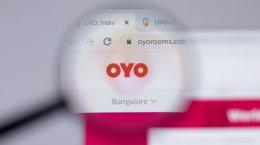India’s microfinance industry has been in a crisis mode since the Malegam report came out in October 2010 but the situation has started to stabilise. While Andhra Pradesh-based microfinance institutions (MFIs) with loan portfolios have seen significant write-offs, those operating outside the state have now started raising capital and once again expanding their loan books.
In the second largest equity investment in an MFI since the report, Bangalore-based Ujjivan Financial Services has raised Rs 127.9 crore ($25.5 million) in its fifth round of equity funding earlier this month. The round was led by the Dutch development finance institution FMO, along with Wolfensohn Capital Partners – promoted by former World Bank president James D. Wolfensohn. The round also saw participation from all existing private equity investors.
Ujjivan was set up by Samit Ghosh, who pioneered consumer banking in India with Ravindra Bahl (now MD at ChrysCapital) and Jaitirth Rao (founder of Mphasis, now on housing venture) at Citibank in 1985. An alumnus of Jadavpur University and Wharton School, he also led the launch of retail banking for Standard Chartered in the Middle East and South Asia, and for HDFC Bank in India.
In an exclusive interview, Ghosh talks about Ujjivan’s new round of funding, how the company plans to expand its loan book from Rs 600 crore to Rs 1,600 crore and its focus on operational efficiency. Excerpts:
How are you currently reading the microfinance industry?
The microfinance industry is stabilising now. Non-availability of funds – both in terms of debt and equity – was the key concern post-Malegam crisis. But the microfinance activity is now slowly reviving. On the equity side, there have been quite a few transactions post-crisis, such as Bandhan (Rs 135 crore from IFC), Janalakshmi (Rs 65 crore from CVCI) and our round of Rs 128 crore.
The key thing (for Ujjivan) was that the funding came from both new investors and the existing ones. And this certainly signals that the equity interest is coming back. Our investors are not just DFIs – one of them is Wolfensohn Capital Partners and it’s their first investment in the microfinance space.
As far as debt is concerned, banks, too, have resumed lending but they are being very selective. The large number of banks, who had been lending before the crisis, are not there. But then, this is a changed scenario. Two of the largest funding banks – HDFC Bank and ICICI Bank – have still not started lending to MFIs. But other banks have started coming back and foreign banks may soon follow suit although they might not be doing it large scale. SIDBI is taking a leading role in ensuring that debt-funding comes back to MFIs. Plus it has a fund worth Rs 100 crore and it is planning to invest 60 per cent of that in small and medium-sized MFI players before March.
But it is now quite different from the pre-crisis scenario. On the debt side, too, we have some positive developments in terms of alternative capital sources. For instance, the NCD deals took place in the past one year. Now, with the ECB opening up, more such deals will be there in the new financial year.
Do you think ECB would allow larger debts to be raised?
The process will be slow because pricing can be a constraint. But we see a few deals happening in the next fiscal year.
How was Ujjivan’s recent equity fundraising different from the one raised in 2008?
Earlier, there was a huge demand from investors and that led to an oversupply of equity. As for the recent round, we started the process back in August 2010 and engaged Kotak, post-SKS Microfinance IPO. We thought it would be a good idea to start working with Kotak in case we opt for an IPO in the next few years (although we did not need Kotak to do the private placement deal). As you are aware, there was a lot of interest at that time.
But when crisis struck the industry, most of the investors disappeared and we put the fundraising on the backburner. We resumed the process only in September-October last year. Although all our existing investors were supportive, it was a difficult task to attract new investors post-crisis. However, our existing backers helped source new investors and supported us throughout the transaction.
But do you see more DFIs as equity investors in MFIs as compared to mainstream PE players?
I think you will have more DFIs and multi-lateral agencies like IFC, which will play a much larger role in this space. But there may not be a large number of private equity investors except for those who are really keen about this sector. That’s why it was a revelation when Wolfensohn invested in Ujjivan. PE firms, which are really serious about this sector, will come in but those won’t be too many.
After the current round, what are the expansion plans of Ujjivan?
We have a two-year programme in place and within the next financial year, we should be able to re-engineer ourselves so that we can cut down our operating expenses and remain profitable, even with the new interest rate cap and margin cap rules. Also, not much debt-funding was available during the past one year and consequently, we have a fair number of idle customers. So our first task is to identify our good idle customers and make sure that we provide them loans.
We have also reduced the number of branches from 351 to 302 through mergers. So we have taken quite a few measures to become more efficient. Our first focus is to strengthen our relationship with existing customers. We will then start expanding and reach out to new customers.
You will also see a dramatic growth in our loan portfolio book. In terms of outreach, we will do it in a more controlled manner. With the current round of capital, we can leverage our portfolio to Rs 1,600 crore, which will happen over the next three years.
How is Ujjivan becoming more operationally efficient?
We went through a period of very rapid expansion over the last 5-6 years. Even at the end of the last financial year, 100 of our 351 branches were less than one-year-old. Those were swelling our operating expenses as it takes 12-18 months for a branch to break even. Then we looked at the branches where we could consolidate and the number has now come down to 302.
Then there are our field staff members. Each one currently handles around 350 customers. This will be increased to 750 per head over the next 2-3 years through re-engineering our process and that will ensure a lot of productivity.
We have also rationalised our product structure. Unfortunately, we have to discontinue a lot of small loans (around Rs 2,000) as those are not profitable. We are also looking at our overheads in terms of supervision. And we are using a lot of technology to achieve this.
Going ahead, do you plan to expand your product portfolio beyond lending?
Yes, we do. We have already started selling life insurance. The Indian government has required insurance companies to provide for the poor and microfinance is the best conduit for the same. We would like to add pension, do some remittances if possible, and also provide thrift products if regulations permit us to do so. We might add pension to our portfolio in the next 12-18 months, but thrift may take another 4-5 years. It totally depends on industry regulations.
From an industry perspective, the key is the Microfinance Bill that will go through in the next 12 months. That will be the blueprint for the industry for the next two decades.
Ujjivan has used new sources of capital like securitisation and NCDs. Do we see more of that in the future?
I don’t think we will do any more securitisation till the year-end and even if we do, it might be a small one. We might do one NCD issue towards the end of the year and then 3-4 issues during the next year. I think now we have sufficient funding in terms of equity and a lot of banks are also willing to lend. In fact, we are now sitting on cash, which is very unusual in this space.
But banks continue to charge higher rates to MFIs. What do you make of that when you are in talks with bankers?
I always joke that prior to the crisis, MFIs were blamed for profiting from the poor. But post-Malegam committee, banks are profiting from MFIs. The RBI has set the 26 per cent limit and a 12 per cent margin cap. It has given a licence to the banks and those who used to lend at anywhere between 10-12 per cent, have now raised the interest rate to 14-16 per cent.
Unfortunately, due to the lack of funding, MFIs are now ready to pay any price. Hopefully, the interest rate will start easing up and with alternate sources of capital, MFIs will also have some bargaining power.
You plan to continue your focus on urban and semi-urban areas. What are the advantages of this model?
There are about 200 million customers in the market we are addressing. It’s obvious that the rural population is somewhat scattered and isolated while in urban areas, your customers are concentrated in small localities. So you have more business opportunities in urban areas.
Do you see any scope for consolidation in this industry?
Unfortunately, there is a fair amount of overlapping as far as customers are concerned and there is distrust among MFIs in terms of the processes followed by them. Even though we have liquidity, I am not sure if I am going to get the same set of customers or whether I will be comfortable with the processes they follow. I think there will be MFIs which will shrink or disappear while will grow organically.
When do you see the next listing by an MFI? How do you plan to give exit to your earlier investors?
Any listing will take 3-4 years. Exits will happen through secondaries and we are encouraging that. We will help the early investors (who have put in the seed capital) in getting liquidity.






